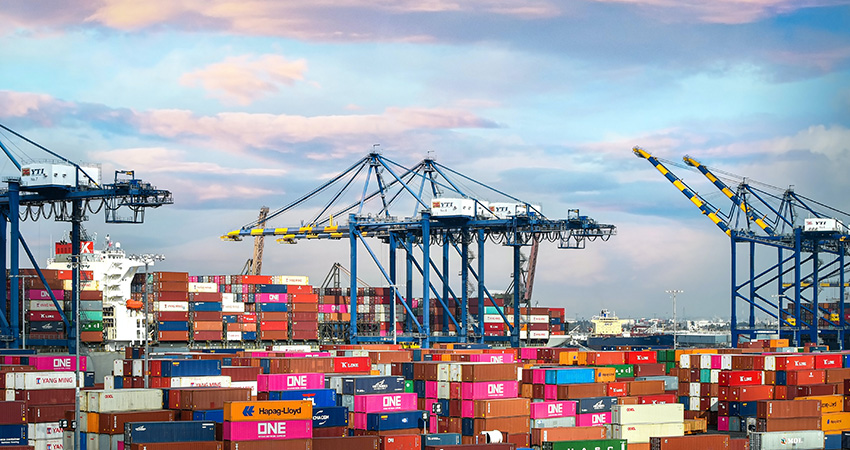Supply chain woes: the Port of LA on Dec. 2, 2020 (credit: Barrett Ward on Unsplash)
While the ripple effect of massive supply chain disruptions caused by the pandemic continues to affect imports and transit times across industries, a massive reshoring of production and distribution to North America is not likely, according to a recent report from The Economist Intelligence Unit.
“There have been conversations and a lot of optimism in Washington DC among policy maker and industry groups about the possibility for reshoring and leveraging supply chains in North America to make them more secure,” said Andrew Viteritti, commerce and regulations lead for The Economist Intelligence Unit. “The countries have very integrated markets and a free trade agreement. But that optimism is overblown.”
Viteritti said there are a number of reasons why there won’t be any kind of game-changing supply chain shift out of Asia to North America. For one, trade and production from Asia proved fairly resilient during the pandemic, more so than other regions, with the hit to exports lower than in other regions and recovery quicker.
“Even taking the pandemic into effect, we see Asian exports continuing to grow at a greater pace through 2025, while North America’s share remains unchanged,” Viteritti said.
While the Economist report notes there will be supply chain diversification, particularly within Asia and near east markets like Vietnam, “any movements to North America will remain an exception to the rule.” The reasons given include companies and investors’ concerns over a lack of competitiveness, Asia’s relative low costs, lingering U.S. protectionism even with a new U.S. administration, and cross-border tensions within North America.
“These factors will discourage the types of investment required to transform North America into a viable, self-sustaining supply-chain ecosystem,” the report states. “This will be particularly true of foreign investment, which will continue to favor Asia’s low-cost production hubs.”
Viteritti said the urgency factor of North American reshoring is receding along with the threat level of the pandemic, as trade and travel has been picking up with economies reopened. Most recently, China lifted restrictions at the key port of Yantian, although huge container backlogs persist.
Unrelated to COVID, the Ever Given’s six-day blockage of the Suez Canal in March, through which 15% of the world’s ocean freight transits, could affect shipments for months.
“COVID-19 was a rude awakening for everyone, with many discussions in the public and private sector about building supply chain resiliency and security that weren’t firmly on the agenda before that,” he said. “The reality is, we expect (COVID) will be less of an issue going forward.”
Other factors militating against a North American reshoring is the huge Asian consumer market, with companies wanting to keep supply and production close to that massive opportunity, as well as the relatively higher facility and labor costs at least in the U.S. and Canada, Viteritti said. Mexico is an option but there are serious issues.
“It (Mexico) could be ripe for having a supply chain closer to home,” he said. “The problem is the business climate there is quite bad, with the president pushing a very nationalistic and protectionist agenda. He’s rolling back energy reforms and canceling high-profile foreign investment projects, and has been slow to build a relationship with Biden. All of this is chilling investor sentiment, which is expected to continue through 2024.”
Viteritti said he didn’t rule out some kinds of limited or industry-specific reshoring where it made sense, as long as it didn’t compromise existing production capacity in Asia. “It’s more of a backup plan, a China plus one scenario, a realistic way of building redundancy and resilience into the supply chain,” he said. “I don’t expect that to translate into anything widespread. The costs and opportunity costs are going to be big factors.”

